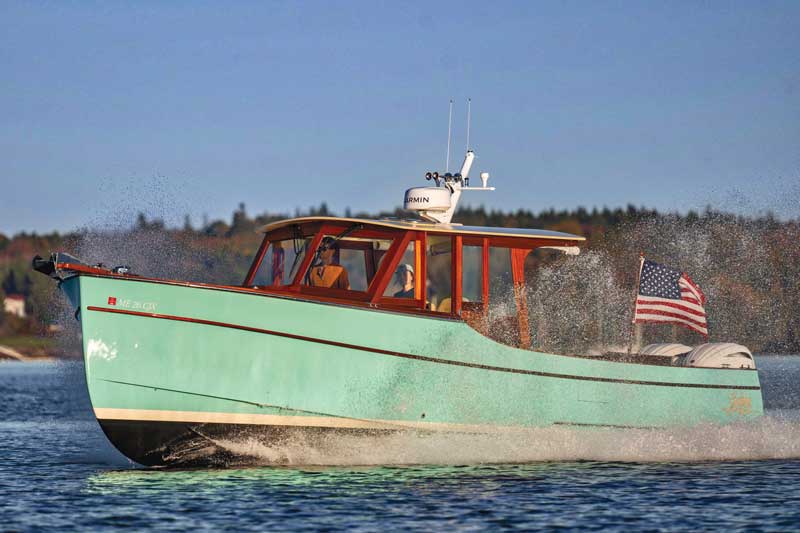
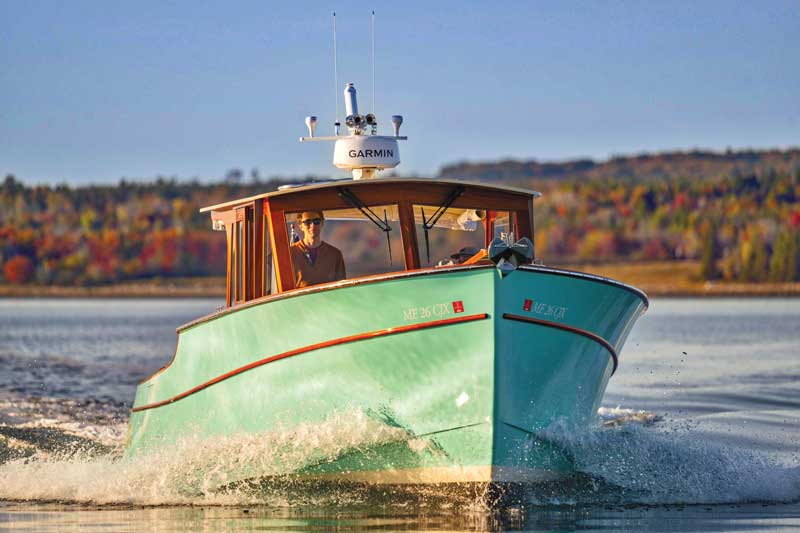
If you’ve spent any time around the water, you know that the adage, “There’s no such thing as an ugly boat,” is patently false. Even in Maine, it’s not that hard to find some boat, moored in a harbor otherwise filled with classic yachts and handsome lobsterboats that, by design or dereliction, insults the eye.
Then there’s the rare boat that in even the most elegantly stocked harbor, or any harbor for that matter, stands out for its sweetness of line and proportion, quality of finish, and just plain “wow factor.” To my eye, that boat has to be the Gatsby II, a beautiful 32-foot day boat built for a repeat customer by Hylan & Brown in their Brooklin boatshop, on the shore of the Benjamin River.
Launched last year, the Gatsby II can trace its roots back to 2018 when Hylan & Brown designed and built a 26-foot-6-inch runabout—the Gatsby—for an experienced sportfisherman and his family, who had a new waterfront home in Rockport, one of Maine’s most picturesque harbors.
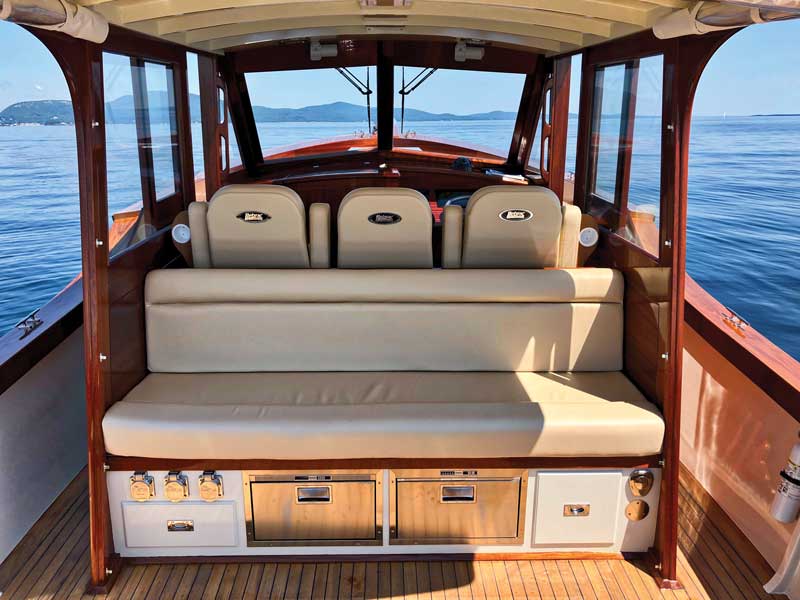
and a table for entertaining the crew (below). Photos courtesy Hylan & Brown

The family was delighted with their new boat and used it extensively for picnics and day trips around Penobscot Bay.
“They loved it,” boatbuilder Ellery Brown said recently, but eventually, “they wanted a bigger boat, more capable, drier, better ride, bigger for more family.” So, after three years of enjoyment, the customer returned to the boatshop where the Gatsby had been built and discussions about a new and larger boat began.
The project was complicated. The customer wanted a boat with the same graceful elegance of their existing boat, but one that was larger and “more teched out,” Brown said. The new boat would have, among other features, a wrap-around stern seat, hull doors for ease of boarding, and, eventually, a walk-around pilothouse that would replace the Gatsby’s open cockpit.
“That’s not where we started,” Brown said.
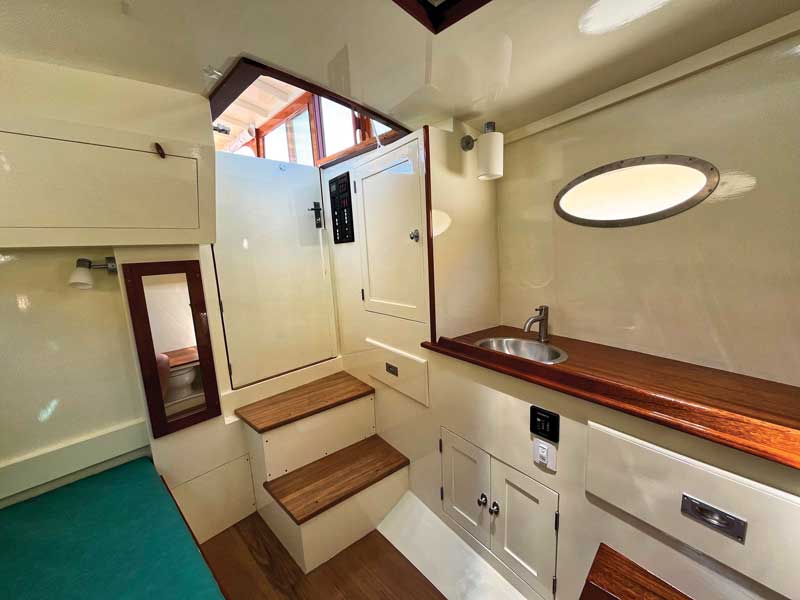
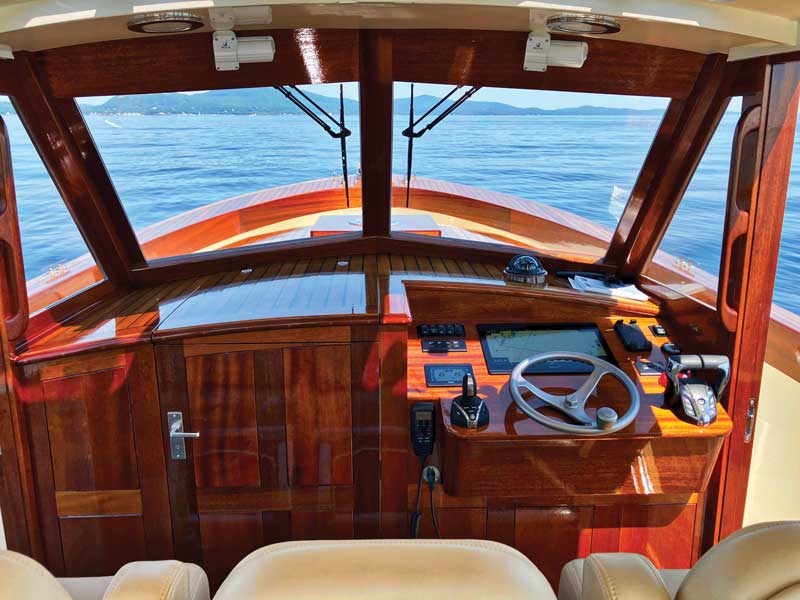
Matthew Smith, a naval architect from Barrington, Rhode Island, was called on to develop the lines and structural design for the new boat. Brown said that Smith was chosen because of his experience with powerboats and because he had done drawings for wood construction used by Hylan & Brown. “I mean, he’s not just a fiberglass guy,” Brown said.
Smith was able to take a ride on the original Gatsby before he began designing the new boat, a process that involved many discussions with the owners and the builder, and production of many conceptual draft plans.
“He was consulting with me on construction details and with them on aesthetics,” Brown said, explaining Smith’s approach. “We finally got it, got a layout everyone was okay with, and he drew up some lines.”
Smith also designed the pilothouse, though, Brown said “we tweaked it a bunch” during construction. As the project developed, Hylan & Brown’s Ben Parson produced detailed construction drawings of specific construction elements.
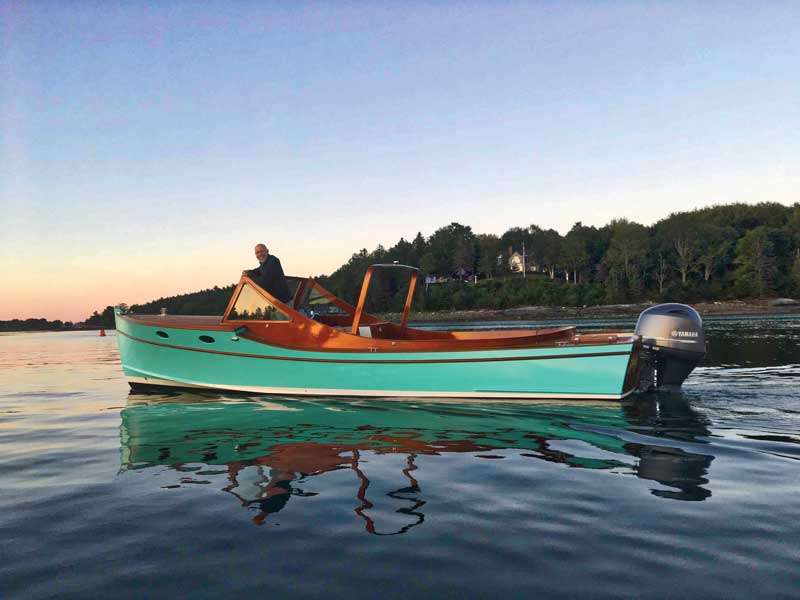
At 31 feet, 6 inches on deck, the Gatsby II is only 51⁄2 feet longer than the original Gatsby. But the new boat displaces approximately 10,000 pounds, about three times as much as the smaller boat. Part of that additional displacement is attributable to the boat’s 10-foot-4-inch beam, but much of it comes from the boat’s glass-sheathed, cold-molded, cedar-strip-and-marine-plywood hull construction, its custom fittings, and the Seakeeper gyroscopic stabilizer. The Gatsby II is powered by twin Yamaha F250 XSB outboards with digital electric steering and Helm Master EX controls that incorporate a single joystick and an integrated autopilot. The joystick controls a Vetus bow thruster, as well. Hardware also includes an electric windlass on the bow for convenient anchor handling.
The joystick is primarily for use in low-speed, close-quarters handling situations; there is a handsome, conventional wooden wheel at the helm. With digital controls, all engine operations—steering, shifting, and throttle—are via a fly-by-wire system so there are no hydraulic hoses connecting the helm to the engines.
“When you use that joystick, what’s actually happening is remarkable,” Brown said. “It’s doing all the things at once, maybe shifting the two motors in opposite directions and throttling.” The boat has a full complement of electronics—radar, VHF, and AIS—at the helm. Control central is a 16-inch Garmin multifunction display.
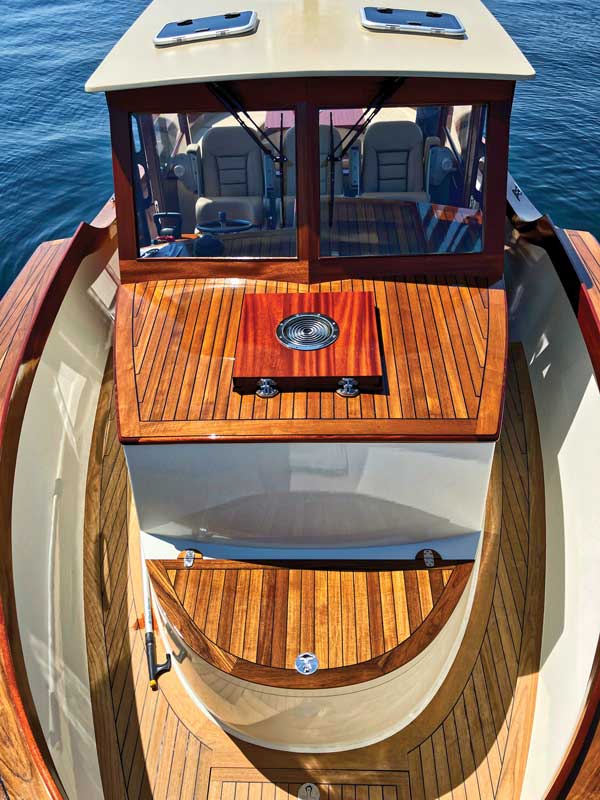
Photo courtesy Hylan & Brown
The Gatsby II is definitely a day boat. Seating includes triple helm chairs in the wheelhouse and a custom bench and curved transom settee in the aft cockpit, which is designed for real comfort underway and at rest. It features lush custom upholstery.
Amenities include an enclosed head below, and a single bunk on which the owner can enjoy an occasional nap, but no galley, no hot water, no heat, and no air conditioning.
The level of finish on the Gatsby II is extraordinary. The custom hull color is the product of many trials and the same as was used on the earlier Gatsby. The interior finish is off-white, the house and trim are varnished; the decks are teak.
Despite the boat’s classic appearance, Brown said that “almost no solid wood” was used in its construction. The varnished house was built using a thin sipo veneer over a marine plywood structure, and the teak decks were laid over plywood, with seams caulked using black West epoxy. That kind of construction saved a huge amount of weight and contributes to the stability of the exterior joiner work so “all the joints stay tight, the varnish stays attached,” Brown said.
In late March, the Gatsby II was in the Hylan & Brown shop where the crew was preparing her for a second season on the water, but it won’t just be sitting at the owner’s dock. According to Brown, the boat saw plenty of action last year and attracted plenty of attention.
“They get around,” Brown said. “All summer I heard, ‘I think I saw that boat at Bar Harbor, I think I saw that boat in the Fox Islands Thorofare.’ It’s not just that it needed to look pretty sitting on the dock. They used it.”
✮
Stephen Rappaport is a writer and editor, has lived in Maine for more than 35 years, and is a lifelong sailor.






